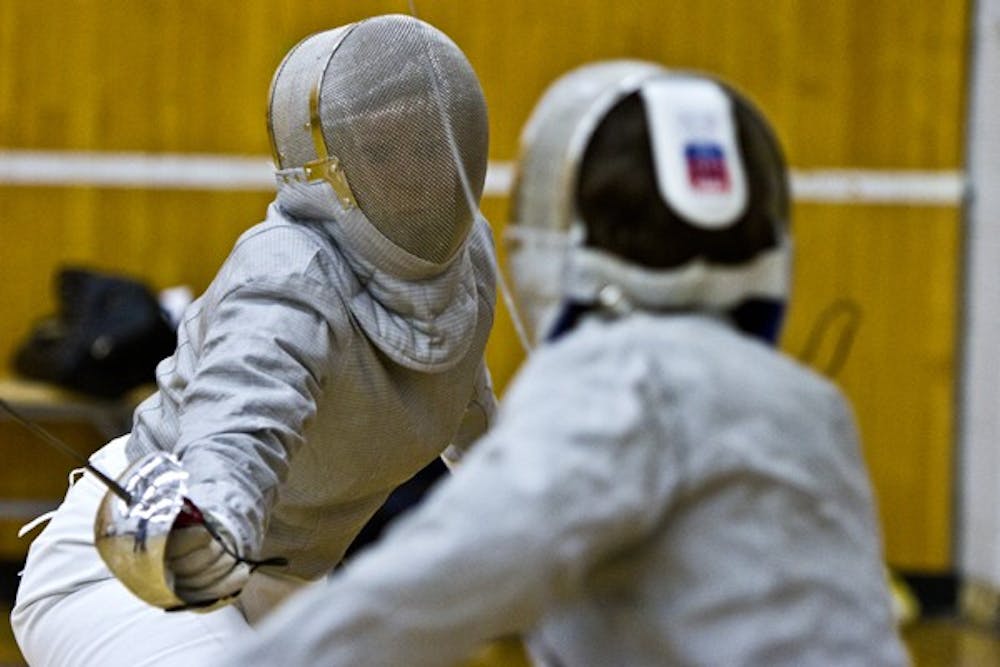Competitive fencing offers alternative for classroom lectures
En garde! Ready? Fence!
Instead of going to class and sitting listening to lecture, students who take PED 266: Competitive Fencing learn how to fence.
Associate Professor of Theatre, Interpretation and Dance Keeley Stanley-Bohn has been teaching the class for the past four years and has been fencing for more than 10 years.
“There’s that attraction to sword playing ... some have seen it on TV during the Olympics, while others are just curious,” she said.
Stanley said she also teaches stage combat, but fencing itself is not just playing.
“It takes a lot of strategy and footwork,” she said. “Footwork itself is the most important. Blade work is the most flashy, but without footwork, you’re dead in the water. Stage combat is the opposite.”
A couple of her students said Stanley is the main reason they decided to take fencing.
“I had a couple of classes with Keeley, who convinced me to try fencing,” said Derek Howes.
The Royal Oak senior said he really enjoys fencing.
“I like how there’s so much strategy to it,” he said. “There’s trickery and the give and take, like boxing, but you don’t get hit in the face.”
Howes explained that there are three different types of weapons; the foil, épée and the saber. They are identified not only by the slight differences in the sword themselves but also their scoring techniques.
“Foil you get points by hitting someone on their torso, épée you can hit anywhere from head to toe and saber is more like slashing, which you can do on the upper body,” he said.
Volunteer teacher assistant Jacque Billette has been fencing for seven years.
“It’s a good way to work out,” said the alumna and Mount Pleasant resident. “It’s not running and you always have a sense of accomplishment at the end. I’ve never walked away from a bout without feeling that I gave it everything I had.”
Billette said bouts for fencing are very fast.
“Saber is fast; usually takes three seconds to get a point,” she said. “Foil and eépée can be longer; anywhere from three seconds to three minutes. This is because saber is much more aggressive to whoever makes the first move, and you can slash or score points on the head, chest and arms.”
But the sport is not just about aggressiveness.
“It’s not just about being aggressive, because it’s such a skill sport,” said Chris Krause, a Sanford senior. "Not that being athletic doesn’t help, but you can be beaten by someone because they’re smarter. Actually, being super aggressive is something that hinders me.”
Billette said fencing is a great sport for everyone.
“It doesn’t matter how you are — fit, skinny, fat — there’s a style that can accommodate whatever you have,” she said. “You just have to love doing what you do to find a way to make it work.”
Students who take the class have to pay an addition $140 registration fee, which covers basic equipment. Those wishing to take fencing can sign up for PED 166: Beginning Fencing for the fall.




